For the next two days our trips would start over the line from Sasser to Dawson. The GSWR runs on part of the former Columbus Southern Railway line that was originally constructed between 1886 and 1890 between Columbus and Albany; the first train operated into Dawson in 1890. The line was originally constructed and owned by the Chattahoochee Brick Co.; for a short period between 1890 and 1891 it was leased to the Georgia, Midland & Gulf Railroad, however it returned to the Columbus Southern until in 1896 this line was sold to the Georgia & Alabama Railway, the same year that the G&A Railway came under control of John Skelton Williams and associates of the Seaboard Air Line Railway group.
This line gave Seaboard access to Albany by connecting with the Savannah-Montgomery main track at Richland. Today, the GSWR operates the remaining portion of the line between Columbus and Cusseta; and between Dawson (the line ends to the north approximately three miles from the at-grade rail crossing frog) and Sasser. The GSWR has pending before the Surface Transportation Board an application to revoke the Rails to Trails authority on the Sasser to Albany portion, and plans to restore rail service on the line segment.
At Cuthbert, the former Georgia, Florida & Alabama Railway line that once extended from Richland to Tallahassee, Florida through Bainbridge. Originally constructed as the Georgia Pine Railway it began in 1895 and by 1898 had constructed 40 miles of line between Bainbridge and Arlington. In 1901, it became the GF&A and completed the line north to Cuthbert and south to Tallahassee. It was not until 1910 that the rail line was actually extended to Richland to junction with the Seaboard's Montgomery-Savannah line. Between 1901 and 1908, the GF&A went through a series of ownership/control interests returning to the Williams family until 1928 finally being secured by the Seaboard. Today the GSWR operates the portion of this railroad between Cuthbert and Bainbridge (line control actually ends at MP 91.5 just south of Lynn with trackage rights over CSXT providing access to Bainbridge for interchange with CSXT).
Historical data provided by the Mike Walker, SPV's Comprehensive Railroad Atlas of North America - Southern States (Steam Powered Publishing & SPV, 2001) Ownership and detail of rail line.
Georgia Southwestern Georgia Pine Special 11/20/2005
I walked towards our train capturing this view on the very dark morning.
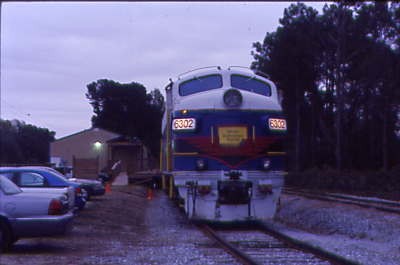
Waiting at the Pulpwood Road station.
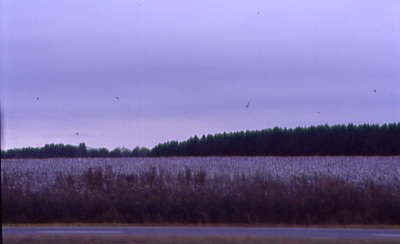
We departed at 8:30 AM EST, proceeding south into Sasser and the end of track, passing a large cotton field along the road we drove on to reach the boarding location.
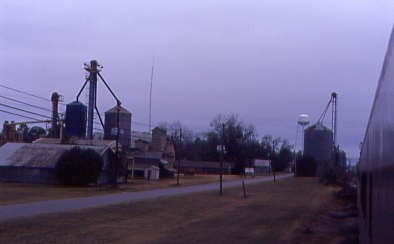
Sasser, Georgia. Located at MP 72.5, the town was incorporated on December 29, 1890 and was named for William Saser. Sasser is the general base of operations for the Georgia Southwestern passenger excursion trains. It is also home of the Sasser Flea Festival each April. The Seaboard Air Line route south of here was sold to the Rails to Trails Conservancy in 1997 but there are efforts to reopen the route to rail service.
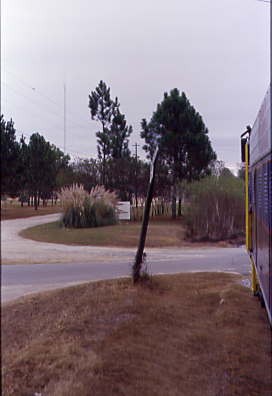
Across that street, the tracks run into the plants so we have reached the end of active track. We reversed direction towards Dawson, where we would join the Smithville Subdivision.
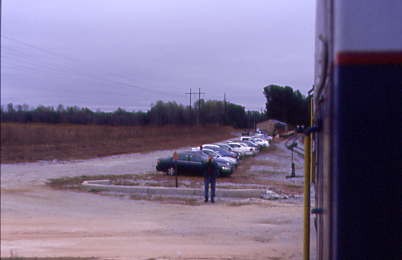
The Georgia Southwestern station with all our cars parked for the day.
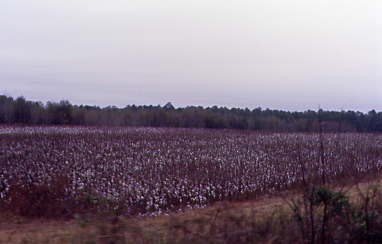
Another cotton field. "I wish I was in a Land of Cotton" song came to mind as we rolled along a straight piece of railroad with no curves until we reached Dawson and crossed Chickasawhatchee Creek at the bottom of a 1.25 percent grade that we would climb to Dawson.
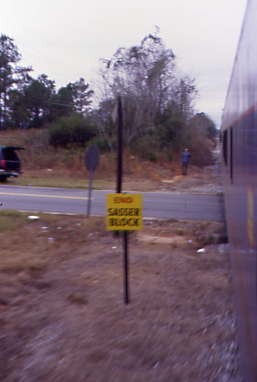
The "End Sasser Block" sign.
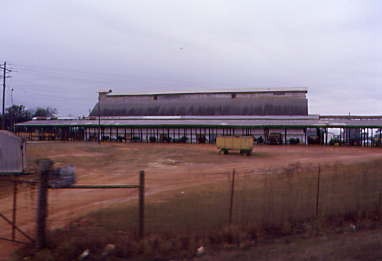
A peanut plant as we reached Dawson and rounded the first curve of this line.
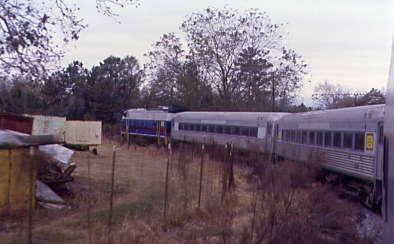
Rounding the tight curve to reach Dawson Junction and our connection with the Smithville Subdivision.
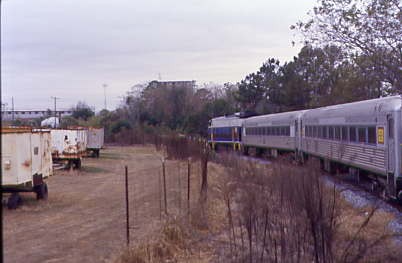
Curving onto the Smithville Subdivision.
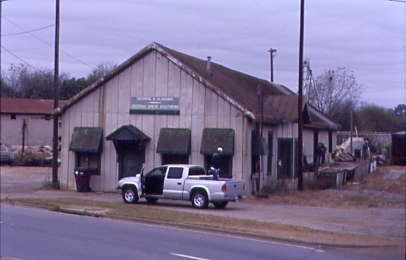
The former Central of Georgia freight station at Dawson.
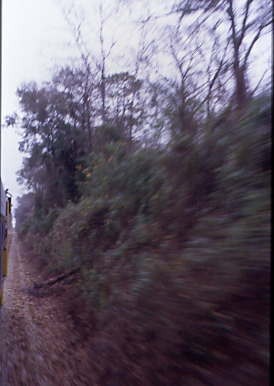
Our train would pass through miles of forest on these trips.
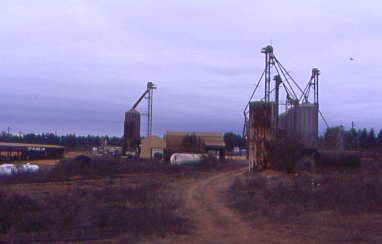
Golden Peanut Mill west of Dawson. The town is known as the world's largest Spanish peanut market.
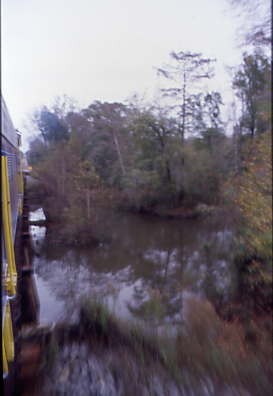
Ichawaynochaway Creek, also known as Big Notchaway Creek by locals. The name is believed to be from a Muskogee Indian word meaning either beaver or male deer.
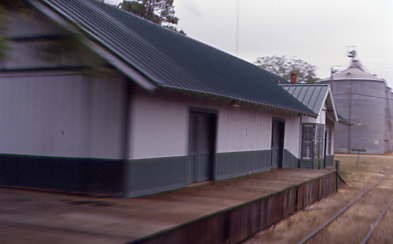
A passing picture of the former Central of Georgia station at Shellman, built in 1893 and houses City Hall at Milepost 298.5. We ran west through Pachitla, Milepost 303.7, before passing the American Proteins spur that climbs up a steep grade off the north side of our route.

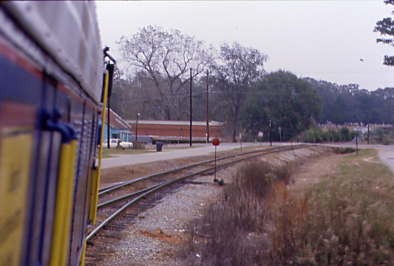
At Cuthbert Junction, Milepost 309.5, we turned off the former Central of Georgia route and took the connection to the former Seaboard Air Line.
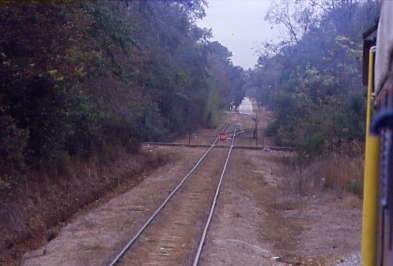
The stop sign on the gate protects the Smithville Line. If we went across that crossing, we would have to stop, unlock the gate and move it across the Smithville Subdivision only after we had made sure there was no trains approaching on that track. Once we crossed, we would have to return the gate to the position in which we found it.
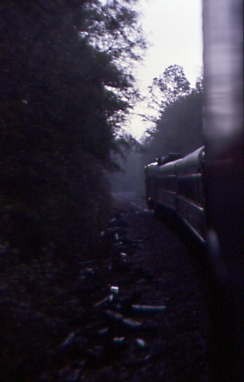
The rain was coming down hard as we made our way south towards Bainbridge.

However, the rain abated later in the journey.
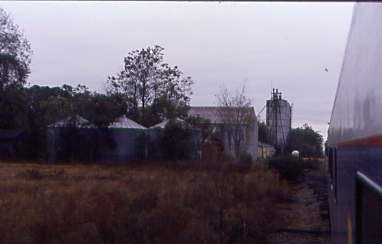
Approaching Carnegie at Milepost 145.2.
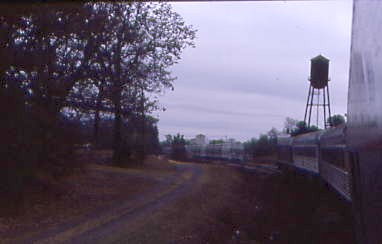
Approaching Arlington at Milepost 130.0. The town proclaims itself to be the "Garden Spot of the World and Southwestern Georgia". It was establshed during May 1873 and was incorporated on September 6, 1881 and served as the county seat of Calhoun County (part of Arlington is also located in Early County) until August 6, 1929. Arlington is named for the estate of Robert E. Lee, better known to many today as Arlington National Cemetery.
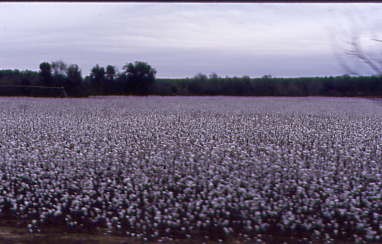
A cotton field ripe for picking.
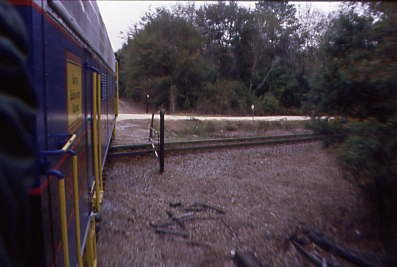
The Norfolk Southern crossing protected by a stop sign and gate.

A former northbound signal on this former Seaboard Air Line.
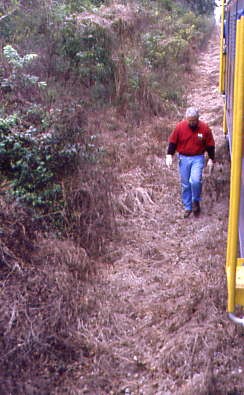
Near Damascus, Milepost 119.8, we had head end power problems and David L. Smoot climbed off the rear locomotive to inspect the train.
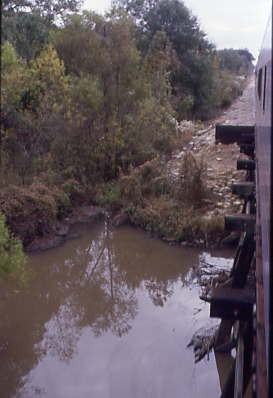
One of the many creeks in southwest Georgia.
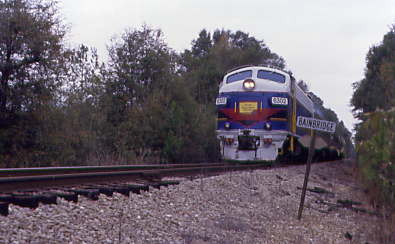
When we reached the southern end of ownership at Bainbridge, Milepost 91.0, we stopped for a static photograph. Bainbridge sits where the Indian village "Pucknawhitla" once thrived. In 1765, John Burgess operated an Indian trading post here called Burgess Town. From 1817 to 1824, Fort Hughes stood here to protect local settlers from Creek Indian attacks. The town of Bainbridge was incorporated on December 22, 1829. It was named for William Bainbridge, who was once the commander of the frigate U.S. Constitution. Bainbridge serves as the county seat of Decatur County and the home of Bainbridge College.
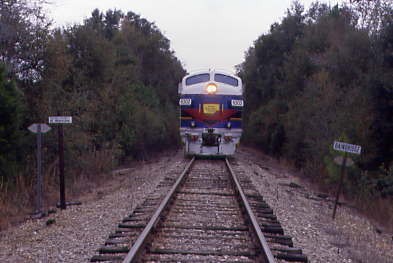
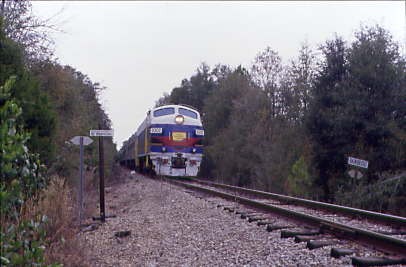
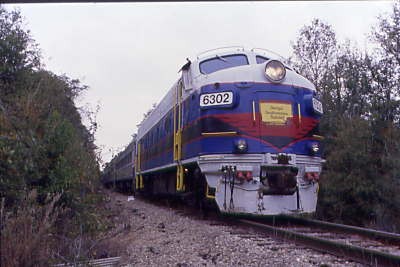
The photo stop at Bainbridge with Georgia Southwestern F9A 6302.

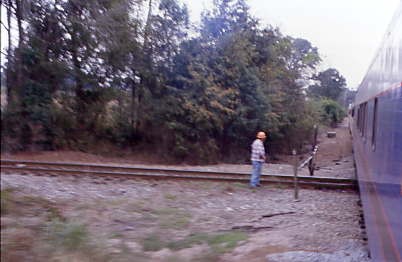
On the way back, the gate at the Norfolk Southern crossing at East Arlington. A Georgia Southwestern track worker took care of realigning the gate so we did not have to stop. Bart then announced that there would be another photo stop at Edison and we made our way there.
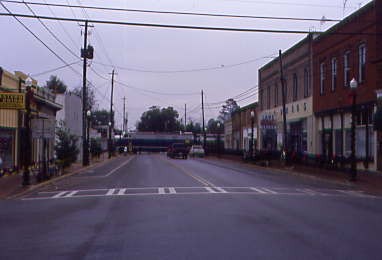
Bart had the idea to photograph the train down Hartford Street East in Edison. At Milepost 139.0, Edison was incorporated on December 6, 1902. Located in Calhoun County, it was originally called Nubbintown but was later renamed after Thomas Alva Edison. Edison is located at the top of a short one percent grade both north and southbound. During steam days, Edison was a listed water station.

We relocated to the grade crossing to photograph the train getting into position for a photo pose and then a photo runby. After this picture, I changed my roll of film and had trousers on over my shorts so reached inside the trousers to put the film in one of the short's pockets then walked over to get in place for the posed pictures.

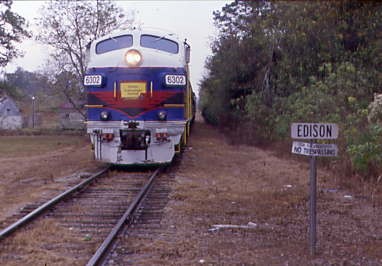
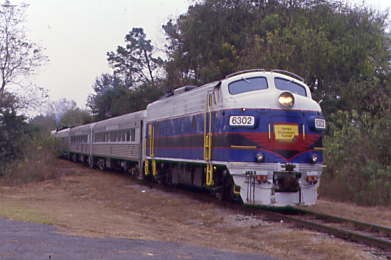
Our train at Edison. I then crossed the street and climbed onto a bench for the rhoto runby.
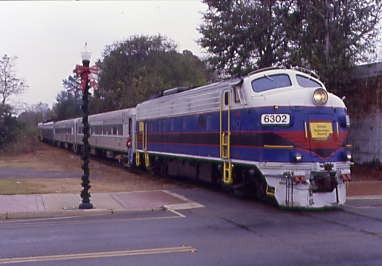
After this picture, I noticed that the film was missing and tried to find it, but Bart yelled "All aboard!" and I had to reboard the train. I told the train crew about the lost roll and they had a track worker search for it without success.
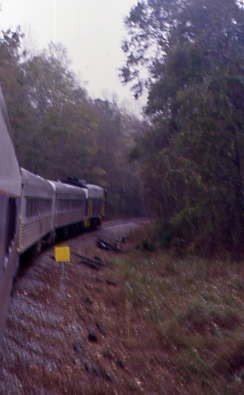
On the way back to Cuthbert, I took this picture in case I could not find the film. After a previous instance of the same thing occuring on the Nevada Northern photo freight trip last year and then finding it, I knew I would drive back to Edison this evening to find it.
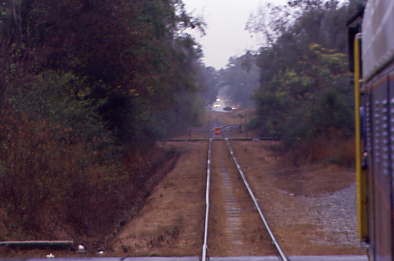
The stop sign at the crossing at Cuthbert that protects the line to Eufaula that we would roll over tomorrow.
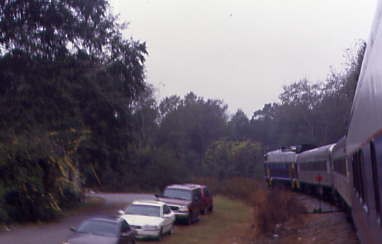
Our train curved back onto the Smithville Subdivision to return to Dawson.
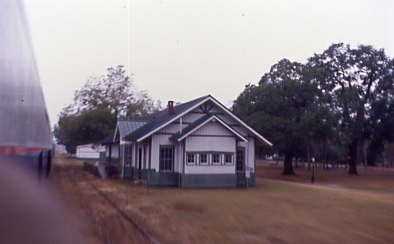
The former Central of Georgia station at Shellman. The rest of the trip to Dawson and Sasser was peaceful and quiet, ending another great day of train-riding in Georgia.
The Search for the Lost Roll of FilmChris and I returned to the car to drive to Edison in the pouring rain and from Sasser, I drove Georgia Highway 55 to where it came to a "T" and turned right on Georgia Highway 234, which we took to the town of Morgan. We turned left onto Georgia Highway 37 which took us to Edison and stopped at a petrol station for a torch and they had one, but no batteries. We drove through Edison to a store on the west side for the batteries before driving back to the grade crossing where there photo runby occurred. My plan to find the film was to go to every spot I had walked to in Edison then keep looking for it until we found it or I gave up.
Chris and I started looking and we checked the gutters that had water running in them from the rain, as well as the gates at the crossing. I knew the film would be okay because the container is airtight. I went to every spot that I had been and walked in between. After about five minutes of searching, I was coming down the steps and Chris was walking across the street when he spotted something gray in the gutter. He picked it up and said, "I found it!" and I was one happy railfan again. We returned to the car and I was on a natural high as we drove east on Georgia Highway 37 through Morgan down to Leary, which still had a train station, where we turned on Highway 62 back to Albany.
We entered the town by the airport so we just retraced our route back to the Best Western as we did when we arrived Friday night then went to Arby's for dinner and back to the hotel. Chris decided to get his own room as the sofa bed was giving his back problems. He gathered his belongings from my room and I watched a little television before calling it a night.